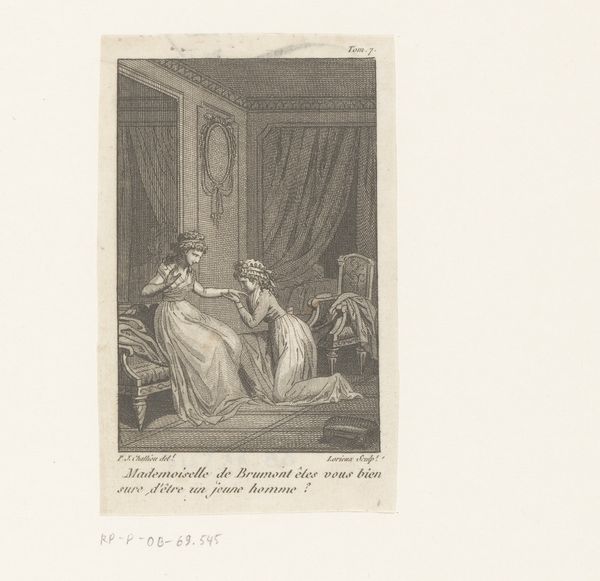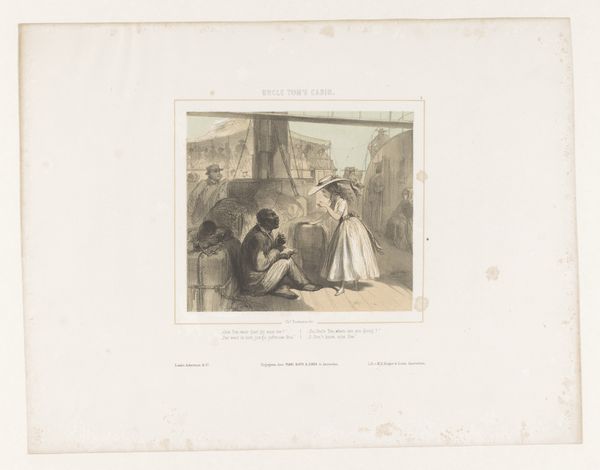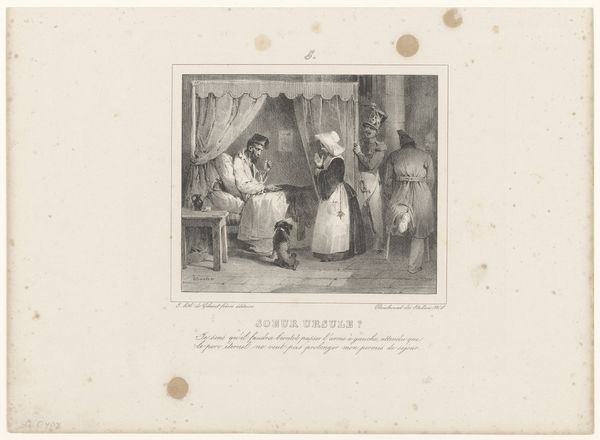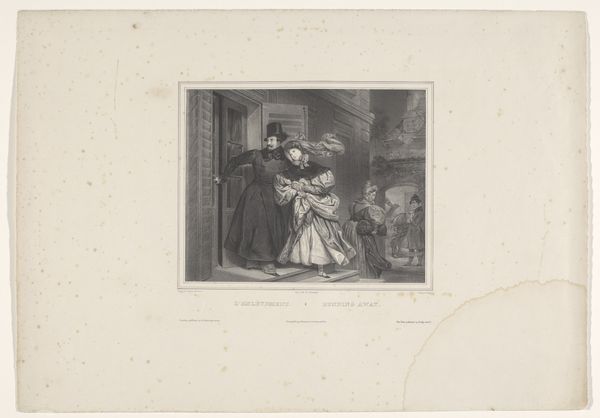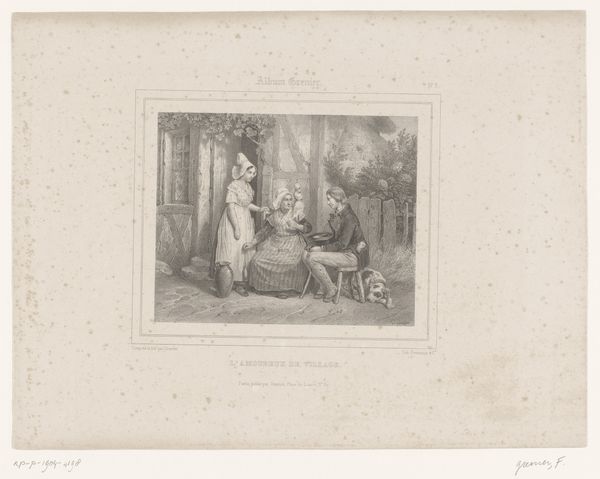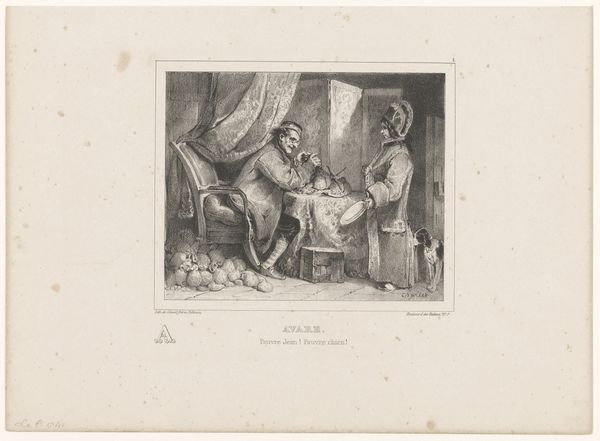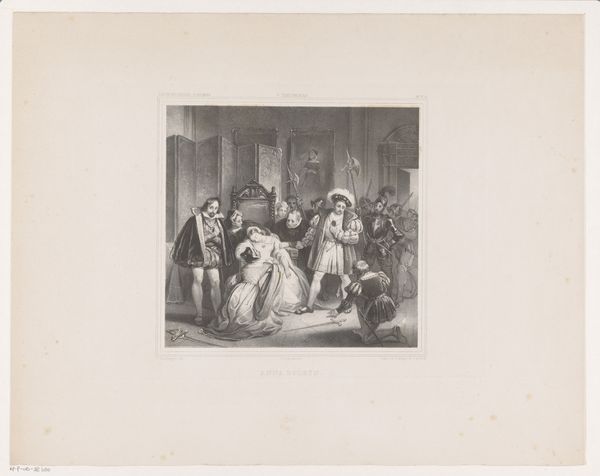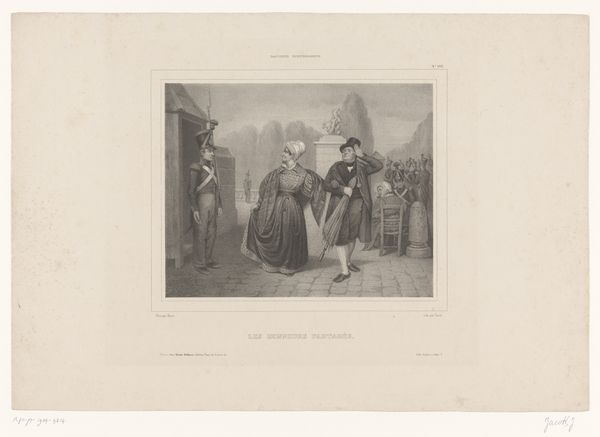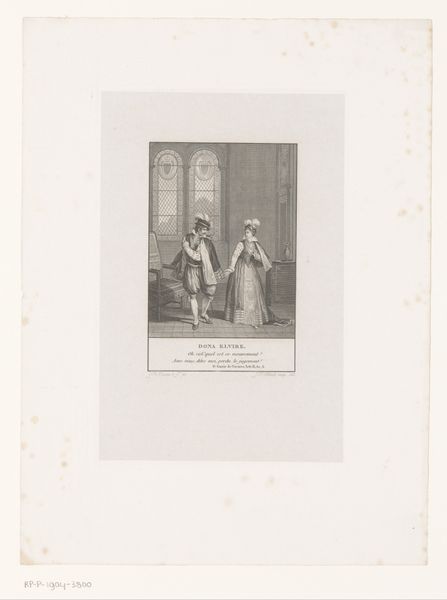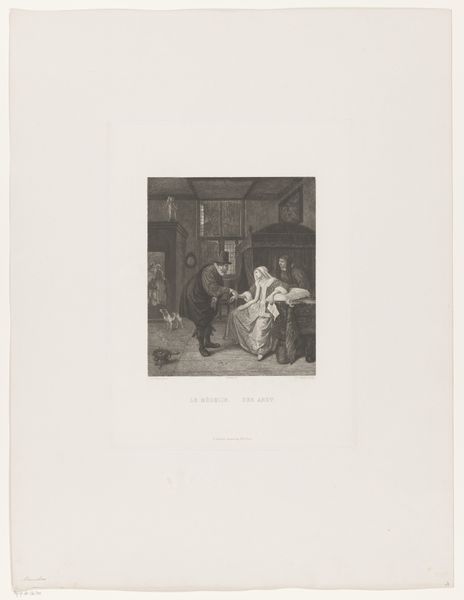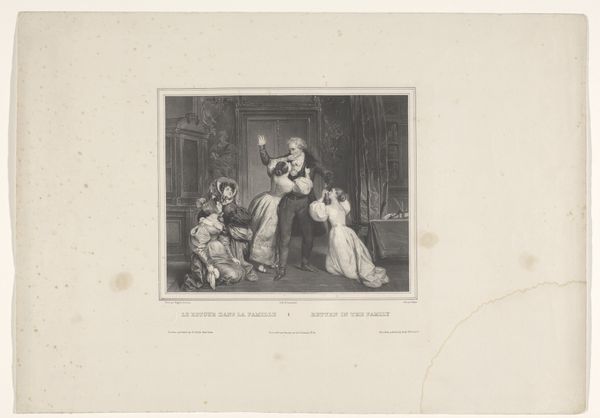
Oudgediende van de slag bij Waterloo wordt gehaald door de dood 1829
0:00
0:00
engraving
#
pencil drawn
#
aged paper
#
narrative-art
#
pencil sketch
#
figuration
#
romanticism
#
line
#
pencil work
#
history-painting
#
engraving
Dimensions: height 248 mm, width 338 mm
Copyright: Rijks Museum: Open Domain
Nicolas Toussaint Charlet made this lithograph, 'Oudgediende van de slag bij Waterloo wordt gehaald door de dood', in France, sometime in the first half of the 19th century. It depicts an old veteran from the Battle of Waterloo being visited by Death. As a lithograph, this work belongs to a specific moment in the history of printmaking, when images could be reproduced more cheaply and circulated more widely than ever before. It is a poignant image which draws on two powerful cultural currents. It refers to the Napoleonic past and the devastating defeat at Waterloo, which remained a potent, and contested, memory for decades. But it also invokes the medieval and early modern figure of Death, here as a kind of consoling visitor. The print includes the line, "Je suis pret" - "I am ready". To understand Charlet's work better, we might explore popular print culture of the time, including the institutional context of printmaking, the economics of image production, and the social meanings of the Napoleonic legend. This is all part of the art historian's task.
Comments
No comments
Be the first to comment and join the conversation on the ultimate creative platform.
